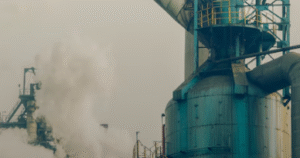$XOM $PXD $DVN
#ShaleIndustry #EandP #OilStocks #CommodityPrices #EnergySector #OilMarket #ShareholderReturns #EnergyStocks #CrudeOil #OilInvesting #UkraineWar #ShaleProducers
The shale exploration and production (E&P) sector has experienced a significant decline over the past year, with companies such as $XOM, $PXD, and $DVN seeing considerable sell-offs. Multiple factors contribute to this downturn in investor sentiment, but a key reason is growing concern over whether shareholder returns, especially in terms of dividends and buybacks, are sustainable at today’s commodity prices. While some investors worry that the current returns might be short-lived, the reality for many of these companies is that they remain resilient, even at lower oil price levels. Notably, unless crude prices dramatically fall below $40 per barrel, many shale firms are likely to continue delivering solid returns to their shareholders. This threshold is well below the current spot price for West Texas Intermediate (WTI), which remains above the $70 per barrel range, even with some inherent volatility.
Between 2022 and the first half of 2023, shareholder returns saw a remarkable boost, largely driven by the upward pressure on commodity prices following the geopolitical instability triggered by the Ukraine conflict. The war pushed oil markets into a state of supply anxiety, which disproportionately benefited U.S. shale producers. Companies were able to generate surplus cash flow, fueling higher dividend payouts and aggressive share buyback programs. At the tail end of this surge, there were concerns that falling global demand and slowing economic growth would lead to a collapse in crude prices, but this scenario has yet to materialize. OPEC+ production cuts and under-investment in non-U.S. energy infrastructure have acted as underlying support for higher oil prices, keeping shale firms more financially secure than some critics had anticipated.
Despite these tailwinds, the market downturn persisted through 2023 largely because of shifting investor priorities. With increased attention on renewable energy and ESG (Environmental, Social, Governance) concerns, traditional fossil fuel companies find themselves in a challenging narrative. Additionally, the typical payout model for many shale E&P’s has transitioned from aggressive production growth to returning capital to shareholders, reducing some of the speculative gains that traders associated with high-growth energy firms. As a result, many asset managers and institutional investors have moved capital away from the sector, which further pressured stock prices. However, underlying operational metrics remain strong for many large shale producers, who are disciplined enough to maintain profitability around current oil levels.
Looking ahead, analysts remain cautiously optimistic. While there is a broad acknowledgment that the rally in oil triggered by geopolitical factors may moderate, supply-demand imbalances could still support stable oil prices above the critical $40 threshold that keeps most U.S. shale players in the black. Moreover, most of these companies have significantly reduced their break-even costs due to operational efficiencies and more favorable fiscal discipline post-pandemic. Investors willing to take the long view may find that the sell-off creates opportunities by investing in high-quality shale operators with strong balance sheets and consistent cash flow generation capacity. As a result, a rebound in the shale sector could be on the horizon, provided that the global oil market avoids any severe supply disruptions or sudden demand contractions.







Comments are closed.